
(Week 24, 1999)
See the weekly operations report for details.

In the display above (click to enlarge), the colored lines show the times of SXT images that currently are on-line at ISAS. The purple lines are flare mode. The gaps will be considerably reduced when the NASA telemetry arrives and gets reformatted.
For a summary index listing of the weekly science reports, click here. Generally, these notes contain current research, or ideas related to current research in solar physics, as revealed by Yohkoh. They are done in "real time" and so they may contain (a) jargon, (b) blunders, or (c) trivialities. Of course they are not screened by referees! We are always happy when somebody writes a paper stimulated by one of these nuggets, and it happens frequently. The SXT Chief Observers (most of the authors) do not have any proprietary rights to the data or ideas presented.
As a part of a joint observations led by Jing Li of the University of Hawaii, we pointed Yohkoh to the southeast in order to get a better view of the streamers in that zone, simultaneously with UVCS, SUMER, CDS, TRACE, and other telescopes. Why is this a big deal? Technically, it is difficult because of our stray-light situation. However it is highly desirable because the SXT (like most telescopes) works best on-axis. We now have enough confidence in our stray-light compensation efforts to have conducted a joint observation by this technique. From SXT's point of view, we would like to study the run of temperature and density with height, under optimum observational conditions. The analysis of faint, extended sources (e.g. streamers) is the hardest possible kind of application of the data, but nevertheless we dare to show you some of it here based on standard manipulations. This can be done in an hour or so, whereas the real analysis will take somebody much, much longer to get exactly right...
Here's how the offpoint program worked:
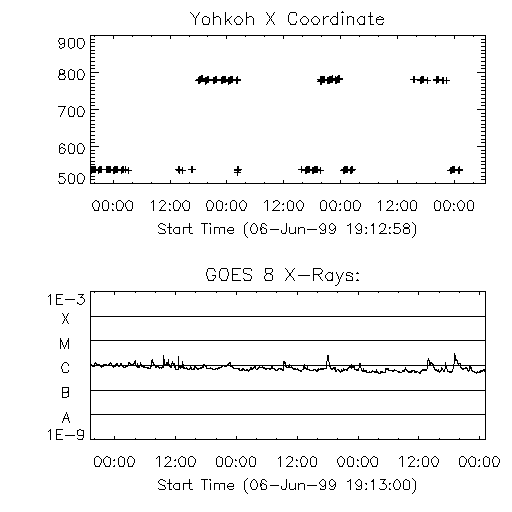
Here the upper trace shows the spacecraft X coordinate, in SXT pixel units relative to an arbitrary zero (points near 500 are the normal pointing postion), and the lower trace shows the GOES plot. No flares or major CMEs to get in the way of our streamers, for better or for worse!
The three images below show (left to right)
In this most convenient world, these images were simply copied from the latest images page at SDAC:
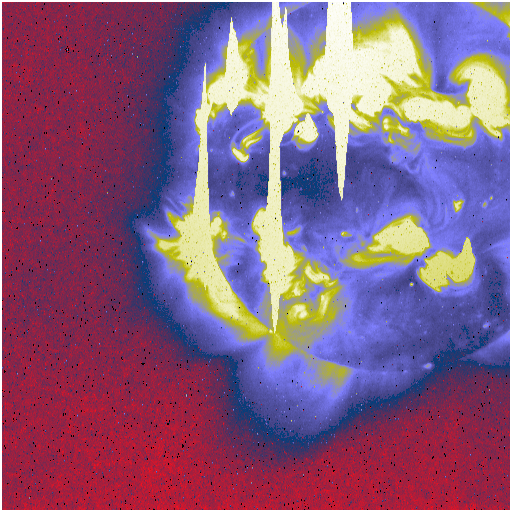
|
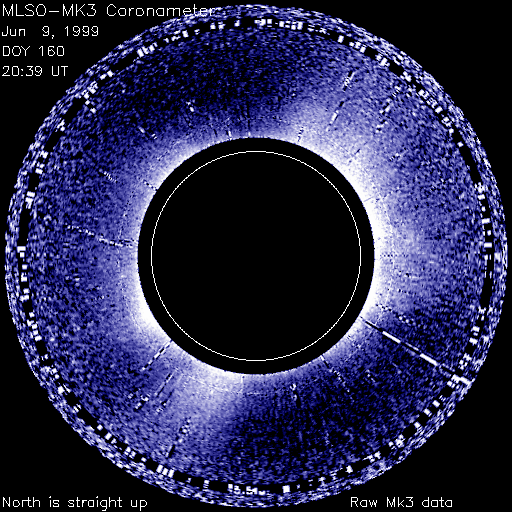
|
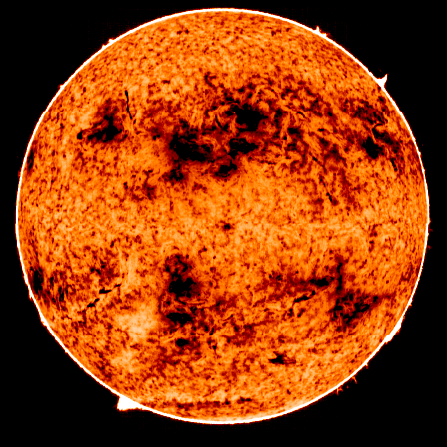
|
What we see on the SW limb of the Sun in the SXT image (left) is two nice bulges corresponding to the bases of streamers. Ignore the bright spikes from saturated active regions on the disk. The K-coronameter image shows these streamers directly in scattered white light (apologies to MLSO, this is certainly not one of their best images!); the He image shows that the higher-latitude streamer (further south) actually corresponds to a rather beautiful filament. It's seen dark on the disk here, and bright on the limb. In the SXT data we sometimes see a hot core in such a filament cavity.
So... we have collected excellent data on streamers.
Quick-and-dirty, of course; we have collected some of the images (the 30-sec exposures in the SXT AlMg filter) by using a typical IDL script and show a summed image below:
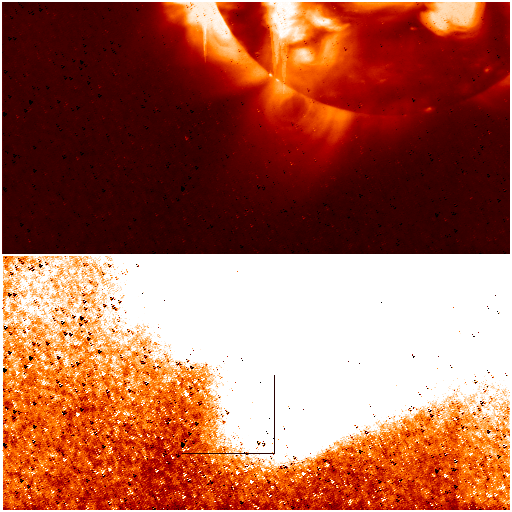
Here we're just showing the bottom half of a summed image composed from frames spaced out over the interval 18:11:34 (June 7) to 02:02:26 UT (June 8), 210 sec total exposure. At the top, a routine square-root compression; at the bottom, a view of the bottom 100 DN/pixel/sec range. Clearly there is abundant signal here, and we hope that we can learn a great deal about temperature and density variations. At the tip of the crosshairs the projected height is 0.56 solar radii, or some 400,000 km.
If you would like to see this page in another language,
try AltaVista's Translation Service at
http://babelfish.altavista.digital.com.
June 8, 1999: Hugh Hudson
(hudson@isass0.solar.isas.ac.jp)